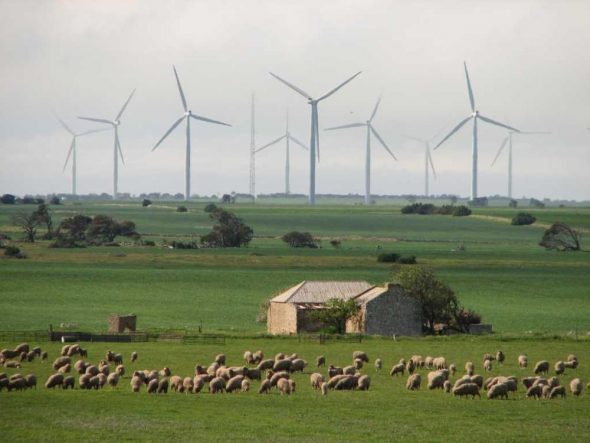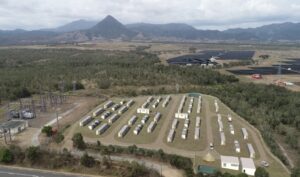Tuesday marks the three-month anniversary of the closure of the last coal-fired “base-load generator” in the South Australia electricity market, and despite the best efforts of many in the Coalition and the Murdoch media, there is nothing to suggest that other states will not follow suit, in time.
The fossil fuel industry predicted – and possibly hoped for – “armageddon” from the closure of the last coal plant. But all it got was a big jump in wholesale electricity prices, caused not by renewable energy, as federal and local energy ministers have made clear, but by the soaring cost of gas and constraints on the interconnecter.
If anything, the events of the last few weeks have reinforced the point that the electricity market is in the early stages of an unstoppable transition. Coal-fired plants will soon be a thing of the past, and the role of gas-fired generators may all diminish as battery storage and other renewables take more central roles.
The announcement by AGL on Friday of its plans – supported by the South Australian government and the Australian Renewable Energy Agency – for an array of 1,000 batteries in homes and businesses to create a “virtual power plant” to address demand peaks and grid stability, is a foretaste of what is to come.
Indeed, South Australia’s experiment – as premier Jay Weatherill has described it – in pursuing the world’ highest level of wind and solar generation is rapidly evolving into a whole bunch of world-leading projects.
These include AGL’s (described the world’s biggest virtual power plant), South Australia Power Networks’ commitment to a second “world leading” battery storage project that will likely reduce the need for grid investment, and various proposals for large-scale solar with storage (from SolarReserve, Lyon Infrastructure and others) and the creation of suburban and remote town micro-grids that will reduce the need for centralised power and distribution.
The withdrawal of base-load coal generation from the South Australian grid has sparked predictions of economic collapse and soaring prices, but these have simply replicated what used to happen when the state relied entirely on gas for the balance on power, even before the arrival of wind and solar.
The fact that AGL and SAPN are now tapping into the power systems of households and businesses to address the high cost of peaking power and network upgrades is going to help change the way people think about electricity – and pave the way for more renewable energy across the country, according to the Clean Energy Council.
“What we are seeing is a glimpse of the future as it comes into view over the horizon,” CEC’s chief executive Kane Thornton says. “It is still early days for energy storage technology in Australia, but the idea that we can run a modern society with an affordable, zero-emission power system is gradually becoming reality.”
The graphs included in a presentation by the Australian Energy Market Operator at last month’s Clean Energy Summit illustrate why “base-load” will no longer be needed in South Australia, and why it will be replaced by more renewable energy, and more “dispatchable” generation facilitated by battery and molten salt storage.
The first is the AEMO depiction of the average day in South Australia. Note how the middle of the day – when fossil fuel generators traditionally made most of their money – has been hollowed out by the presence of rooftop solar.

Average demand has been reduced by 400MW in the middle of the day – energy efficiency has also helped. The main peak has been pushed back into the evening, and its size reduced. Another peak later in the night reflects the load for controlled hot water systems.
This was created to give the Northern and Playford coal-fired power stations “something to power” during the night, but since their closure this demand peak will be removed as the hot water demand is shifted into the “solar sponge” in the middle of the day, as is already happening in Queensland.
This next graph, illustrates why that – and the battery storage trials being conducted by AGL and South Australia Power Networks – are so important.

Within a few years, AEMO predicts, minimum demand in south Australia will fall to near zero, thanks to the proliferation of rooftop solar on households and businesses. By 2026, it suggest, minimum demand will fall into negative territory. This will not happen at night time but in the middle of the day.
Hence the need to store electricity. Hence AGL and SAPN’s trials to shift some of that demand into the day-time and shift some of that solar power in the evening and to deal with unexpected peaks and interruption.
And hence the continued calls for South Australian and federal governments to make good on their promise for solar thermal and storage systems in Port Augusta. A solar tower of the type built by SolarReserve in Nevada and proposed for South Australia could provide power on demand, says the Repower Port Augusta residents group.
In Nevada, the ground breaking plant supplies La Vegas between midday and midnight. In south Australia, it could be calibrated for the needs of the local grid.
Hence, too, the growing interest in storage in other large scale solar projects. Lyon Infrastructure is proposing the world’s largest solar and storage project in the north of the state, on the big line linking Olympic Dam with the rest of the grid.
DP Energy is proposing a solar-wind hybrid that it says will target South Australia’ early evening peaks (due to the nature of the wind resource), and is also considering pumped hydro or battery storage to help it firm up demand.
“Once we encourage more renewables around the grid – I’d be very worried if I was a base-load generator,” DP Energy’s David Blake told RenewEconomy.
“We are in a transition. nothing is going to stop it. I would tend to think that batteries and big solar are going to become the dominant force in the Australian market.”








